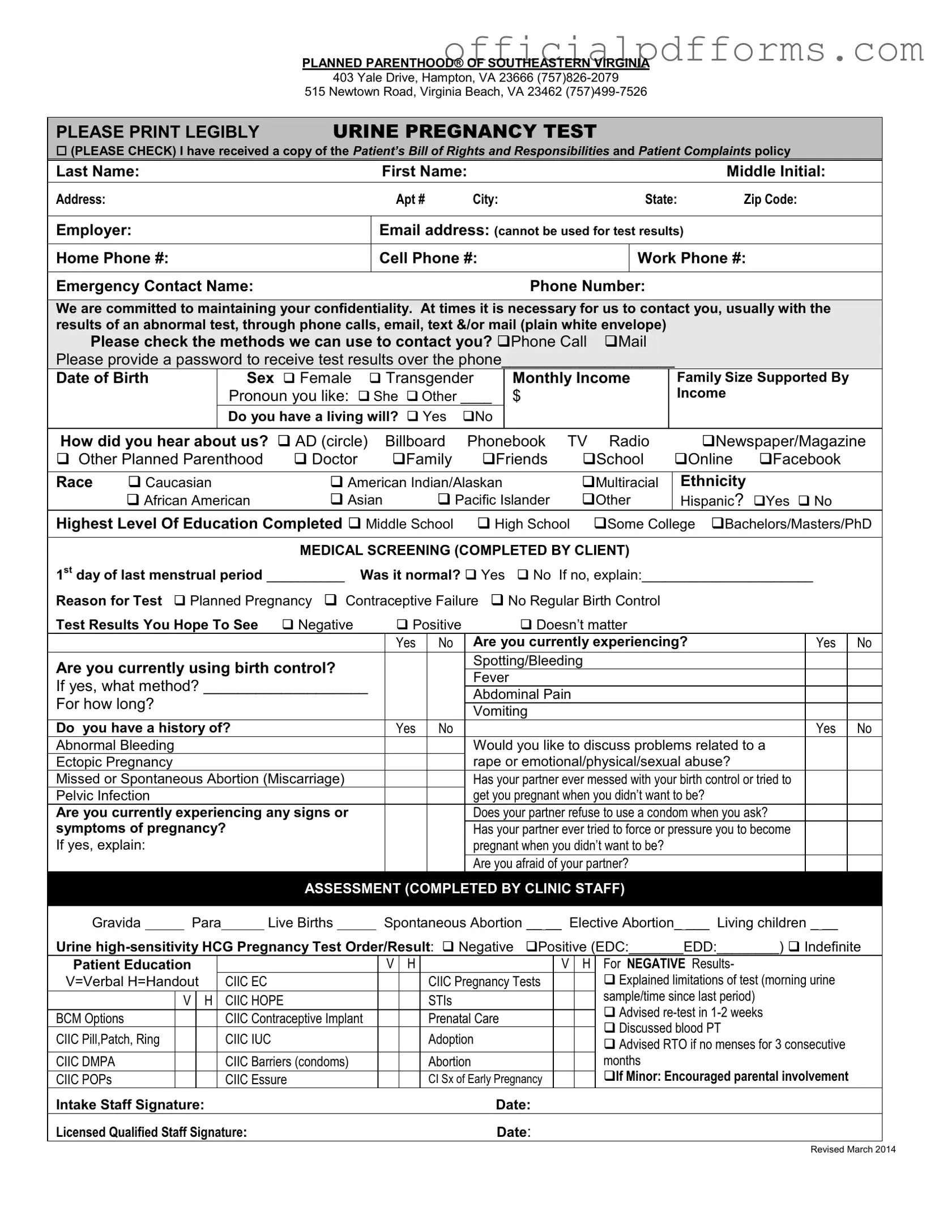The Planned Parenthood Proof form is a document used by Planned Parenthood of Southeastern Virginia to collect essential information from patients prior to receiving medical services, particularly urine pregnancy tests. It ensures that patients understand their rights, responsibilities, and the confidentiality of their health information.
To complete the form, patients should print legibly and provide accurate information in the designated fields. This includes personal details such as name, address, contact information, and medical history. It is crucial to answer questions honestly to ensure appropriate care. If assistance is needed, patients can ask staff for help.
The form requires various details, including:
-
Personal information (name, address, contact numbers)
-
Date of birth and sex
-
Medical history and reason for the test
-
Income and family size
-
Emergency contact information
Additionally, patients must indicate their preferred method of contact for receiving test results.
All information provided on the Planned Parenthood Proof form is kept confidential. Planned Parenthood is committed to maintaining patient privacy and will only use the information for medical purposes. In cases of positive test results for certain infections, reporting to public health agencies is mandated by law.
Can I change my mind about receiving services?
Yes, patients have the right to change their mind about receiving medical services at any point. It is important to communicate any changes in decision to the staff, who can provide guidance and support.
What if I need an interpreter?
If language interpreter services are necessary, patients must inform the staff. While Planned Parenthood may not always have immediate access to these services, they will assist in arranging for interpretation to ensure understanding of all information provided.
Patients are encouraged to ask questions if they do not understand any part of the form or the services being offered. Clinicians are available to provide clarification and address any concerns regarding the information or the medical services to be provided.
